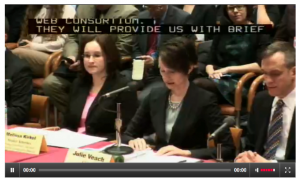July 9, 2008 – Advocates urged legislators Tuesday to invest in transportation options that give Illinois residents relief from record-breaking gasoline prices.
Representatives from the Chicagoland Bicycle Federation , the Transit Riders’ Alliance and the Illinois Public Interest Research Group described their vision for priorities in the state capital bill that places an emphasis on reducing congestion by reducing overall vehicle miles traveled in cars and increasing travel by walking, biking and transit.
Advocates say the capital bill, as proposed by the Gov. Rod Blagojevich , falls short not only of the needed resources to maintain current service and facilities, but does not adequately plan for expansion of transit service and bicycle and pedestrian facilities.
The groups say the $25 billion capital bill is a chance for legislators to make a smart investment in the state’s transportation future that makes it easier for Illinois residents to leave their cars at home.
“If this type of dismal transit funding continues, we can expect nothing less than severe decrease in air quality, choked roadways and more Illinois residents trapped in their cars, spending a frightening amount of money on transportation,” said Rob Sadowsky, executive director of the Chicagoland Bicycle Federation.
Active transportation options – transit, biking and walking – offer a solution to many of the crises Illinois residents fight: increased spending on gas, high rates of obesity, low air quality and clogged roadways.
The Transit Riders’ Alliance is a project of the Midwest High Speed Rail , a member-supported non-profit working for fast, frequent and dependable trains linking the entire Midwest.
The non-profit Chicagoland Bicycle Federation has worked for more than 20 years to engage people in bicycling, encourage activity, increase traffic safety, and design a world-class bicycle facilities network. The Chicagoland Bicycle Federation is North America‘s largest bicycling and pedestrian advocacy organization, supported by more than 6,000 members, more than 1,000 volunteers and 35 full- and part-time staff.

![Reblog this post [with Zemanta]](http://img.zemanta.com/reblog_e.png?x-id=0eabe6b5-8a22-4bd5-81e1-6bd94827128a)





Be First to Comment